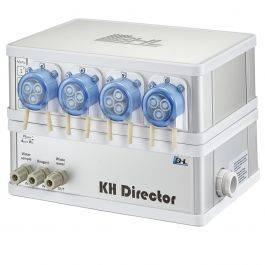Trying to get KH director set up and got to the insert probe part and cannot for the life of me figure out how to tighten it. Looking online it appears that every one that I can find a photo of has a black piece that goes here. Nothing like this was included in my newly purchased KH director. Am I missing a part, or just and idiot?
Also, were the KH director and/or Doser 2.2 supposed to include a PAB cable among their contents? Instructions seem to indicate so, I did not have one with either product and had to find my own...

Also, were the KH director and/or Doser 2.2 supposed to include a PAB cable among their contents? Instructions seem to indicate so, I did not have one with either product and had to find my own...










